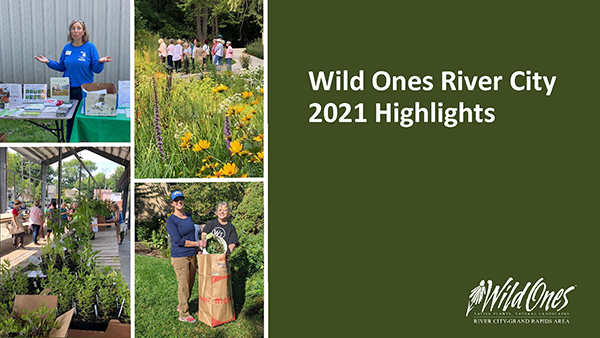2021 CHAPTER HIGHLIGHTS
The evening began with Vice President Linda Gary (standing in for President Marti MacArthur) presenting a short slide show of Wild Ones River City highlights and recognition for two board members who are leaving for other pursuits. Joyce Tuharsky had been our Treasurer for 2 years and then Secretary for 3 years. Barb Olson was Board Member-at-Large for two years. We thank them both for their work.
Linda also announced the three new Board Members-at Large: Karen Detmer-Babbitt, Linda Schuster, and Kathy Stevens and our elected officers for 2022: President, Marti MacArthur, V.P. Linda Gary, Treasurer, Ann Nowak, Secretary, Keasha Palmer.
Finally Linda announced our 15th Anniversary Celebration taking place on June 20, 2022 featuring Dr. Douglas Tallamy presenting “Nature’s Best Hope” along with an Expo with community partners.
PROGRAM RECAP
Compiled by Ruth Oldenburg, WORC Communication Chair
The Science and Art of Propagating Native Plants
Presented by Jeanette Henderson on November 15, 2021
Jeanette Henderson is Program Manager for Calvin Ecosystem Preserve and Native Gardens directing the educational programs, communications, and the native plant propagation program on the campus of Calvin University. She oversees the day-to-day management of the Bunker Interpretive Center and the production greenhouse. A large percentage of her job is mentoring and training Calvin students in the fields of environmental education, interpretation, and native plant production. Jeannette is a graduate of Calvin University and studied under Dr. Dave Warners.
Plant propagation is both a science and an art. The science of plant propagation requires a knowledge of plant physiology, nursery cultural practices, and characteristics of particular plants. The art of plant propagation consists of specific technical skills acquired through innate ability or experience. It requires a certain “feel.”
Jeanette started out her presentation with a recommendation for a book Wildflowers: Growing and Propagating Native Flowers of North America by William Cullina. She shared the following quote by Cullina:
“There is something vaguely parental about plant propagation—nurturing fragile new life into adulthood—that connects you to the plant far more profoundly than just buying a specimen at the local garden center. I think of myself as a facilitation providing optimal growing conditions for the plants under my care to vastly increase their relative success over what it could be in the wild.”
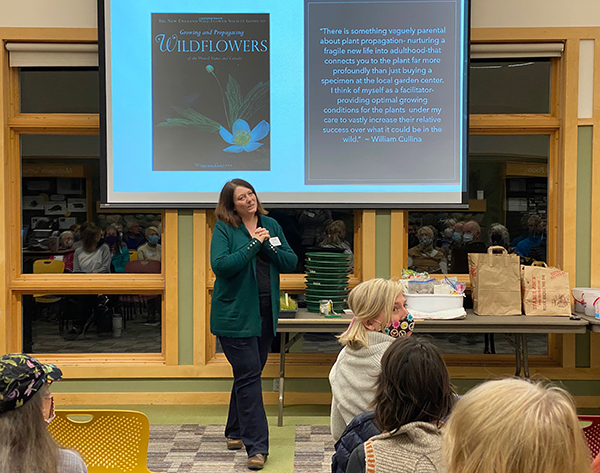
Jeanette described the ways to propagate plants:
- seeds
- stem cutting
- root cutting
- tissue culture
- grafting
- division
Propagating from seed is ideal because it creates biodiversity in the plants. The other methods create an exact clone of the plant. The commercial nursery industry uses stem cutting and tissue culture to preserve the traits of their cultivars. They grow from seed to develop new varieties.
Jeanette explained the term Provenance, which is the wild origin of a particular plant. Your plants will always do better, if you select seed from plants adapted to your specific locality. She recommends obtaining your seeds from Michigan sources or vendors to get Michigan genotypes.
Rules for Seed Collection
- Know your plants (get a good field guide)
- Obtain permission (on private lands)
- Don’t collect seed from rare or endangered plants
- Never collect from public land (parks, conservation lands)
- Collect seed from a variety of individuals and locations to increase diversity
- Collect a small percentage of available seed (10%). Take only what you need.
How do you know when seeds are ripe? Typically, seeds should be collected when they turn a brown, tan, or black color. There are exceptions, however. Collect Lupine seed when the pods just start to turn black, put them in a paper bag, bring them inside, and the heat will cause the seed pods to pop open! Wild Petunia seed pods also pop in a bag.
What to bring along when collecting seeds:
- clippers
- buckets, paper bags
- small mesh wedding favor bags
- tags (“Label, Label, LABEL!” emphasized Jeanette)
- field guide
- zip lock bags
- sand
- pencil
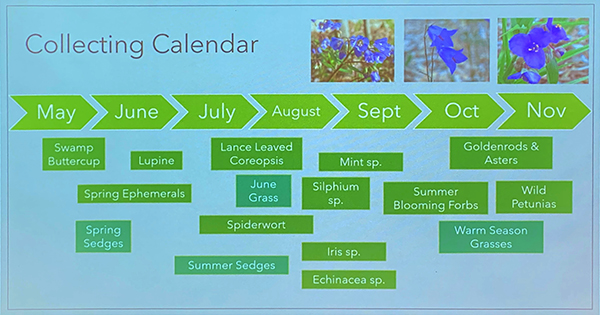
Collecting Calendar – Some seeds need to be collected in late Spring, some in mid to late Summer, and some in Fall. Jeanette has a calendar she uses. Similar calendars can be found on-line.

Sifting Screens – The company CGS Mule, a geological supplier was recommended to buy various mesh sizes of sieves to help separate seeds from plant material. http://www.cgsmule.com
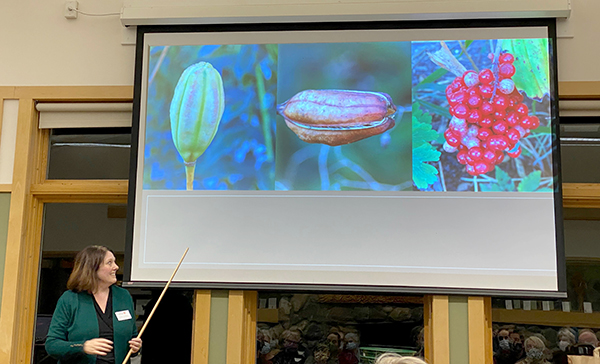
Seed Collection Protocol
- Shooting seeds – Use small “wedding” bags that can be purchased at craft stores or on amazon to put over seed heads on the plant. Tighten the strings, and the seeds will drop in the bag. Good for catching seeds of Jacob’s ladder and Spiderwort among others.
- Fleshy fruits like those from Solomon’s Seal need to be put in water, left to ferment, and the fleshy part will come off. This technique speeds up the germination process, since the fleshy parts inhibit seed germination.
- Hydrophilic seed are seeds that have elaiosomes, which are fleshy structures that are attached to the seeds of many plant species (typically Spring ephemerals). The elaiosome is rich in lipids and proteins that attract ants. The ants take the seed to their nest, feed the elaiosome to their larvae, and discard the seed; thus dispersing it away from the plant. Do not let these seeds dry out. Put in damp sand in a zip lock bag.
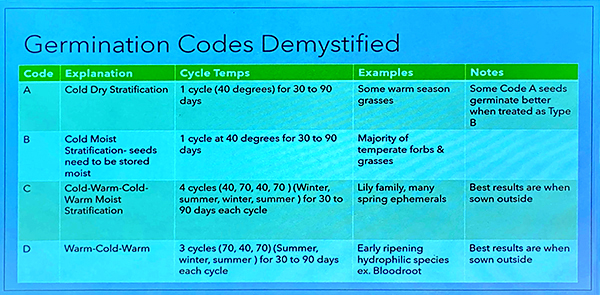
Some seeds require special treatment.
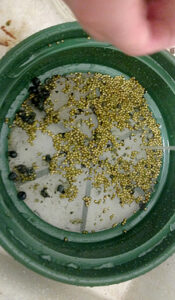
Scarification – in botany involves weakening, opening, or otherwise altering the coat of a seed to encourage germination using different means:
- Hot water (Pour boiling water over seeds in a container and let sit for 10 minutes, drain and let the seeds sit overnight.)
- mechanical scarring with sandpaper
- acid
- heat
- freeze-thaw
SOWING SEED
Things to consider
- sow directly in the ground or in a pot or flat
- when to plant: Spring or Fall?
- types of soil –use potting soil or seed starting mix. Do not use garden soil.
- depth of planting –plant as deep as they are thick or scatter on top of soil if tiny.
Process
- lay down the seed
- lightly cover with soil or scatter on top
- gently water
- label with species name
- keep seeds moist till germination
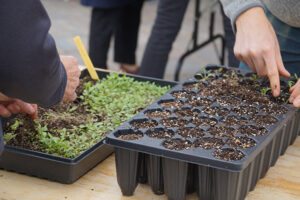
Transplanting Seedlings
- keep roots moist
- plant in moist potting mix
- be gentle
- work in cooler parts of the day
- water gently right after transplanting
- label with species name
Tip – Dip Nodding onion roots in water to loosen so they separate easier.
Care of Seedlings
- pests – Neem Oil
- slugs – Sluggo
- deer and rabbit control – Bonine Repels All
Vegetative Propagation
- stem cuttings – use rooting hormone, dibble the soil and place cutting in soil
- runners – lay on the soil, runners have tiny roots
- division – break or cut apart plants at roots and replant the divisions
Lastly, Jeanette showed us a slide of when she visited the lab at Longwood Gardens with a container full of tissue cultures of native Lady Slippers that they are going to propagate.
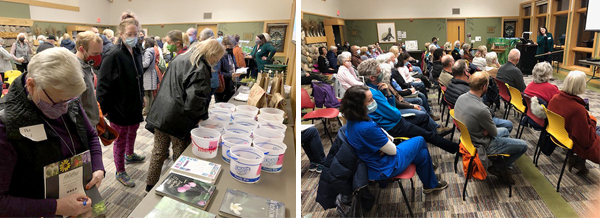
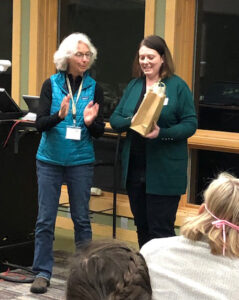
Editor’s note:
Wild Ones River City would like to thank Jeanette for this informative presentation. Also, since Jeanette will be leaving Calvin University in December, we would like to thank her for her help and collaboration with Wild Ones River City Chapter over the years. We wish Jeanette all the best as she embarks on a new chapter of her life and work.

